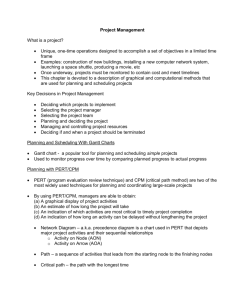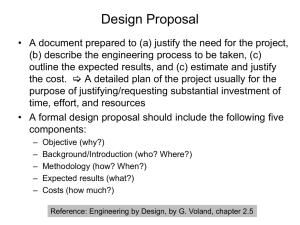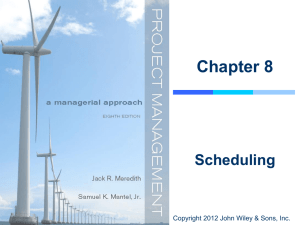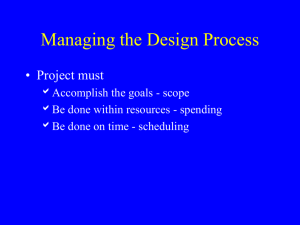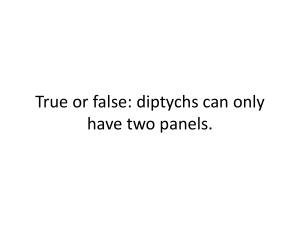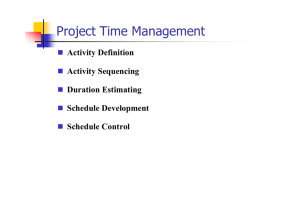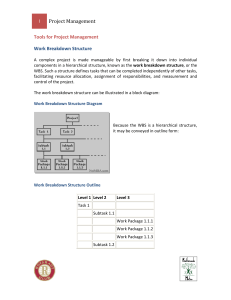Chapter 8
advertisement
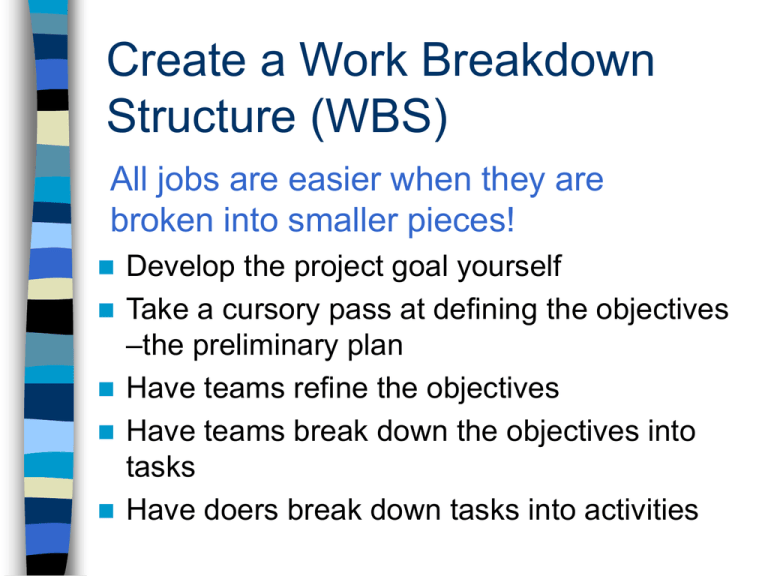
Create a Work Breakdown Structure (WBS) All jobs are easier when they are broken into smaller pieces! Develop the project goal yourself Take a cursory pass at defining the objectives –the preliminary plan Have teams refine the objectives Have teams break down the objectives into tasks Have doers break down tasks into activities Scheduling Tools Charts – bar chart that represents the sequence and duration of activities. Gantt A B Activity-on-Nodes – flow charts that represent each activity with a node (box). This chart is used to indicate precedence in a meaningful way. Scheduling Who sets the schedule? How do we set Priorities? How do we get everyone to agree? How do we handle foul-ups? Can we really anticipate problems? What about changes? Work Breakdown Structure (WBS) A schedule that shows each steps of the project Make sure that each step of the project is completed in the appropriate order. Hierarchy of Work Figure 8-1 (p. 154) Project -> Objectives -> Tasks -> Activities Objectives Big chunks of the project, when added together accomplish the project goal. Project Goal: Kitchen Remodeling Objectives – Plans and Specs – Demolition & Clearing – Installation & Finishing Tasks Represents one of several major deliverables towards an objective. Objective: Demolition & Clearing Tasks: – Remove old wallpaper – Remove old light fixtures – Remove old linoleum & counter tops Activities Basic building blocks of a project Individual actions that will be preformed one at a time. Task: Remove old light fixtures Activities: – Turn off circuit breakers – Remove overhead light – Remove chandelier in the breakfast area Activities – Example 2 Task: Remove old linoleum Activities: – Remove baseboard & old linoleum – Remove fixtures & old countertops – Dispose of old material Develop Work Breakdown Structure Develop the project goal yourself Take a cursory pass at defining the objectives – the preliminary plan Have teams refine the objectives Have teams break down the objectives into tasks Have doers break down tasks into activities Precedence Relationships Relationships between activities based on when they occur in relation to each other. Logical categories that will influence the sequencing of activities: – – – – Technical requirements Safety and efficiency consideration Policy or preference decision Availability of limited resources Scheduling Tools Gantt Chart: a bar chart that is visual representation of the sequencing and duration of activities on any given project (Figure 8-5 p. 162). PERT/CPM Chart: diagrams, consisting of nodes connected by arrows, that shows the flow of work and highlight of precedence relationships. PERT: Program Evaluation and Review Technique CPM: Critical Path Method Case study Project: Surprise Party Cake
